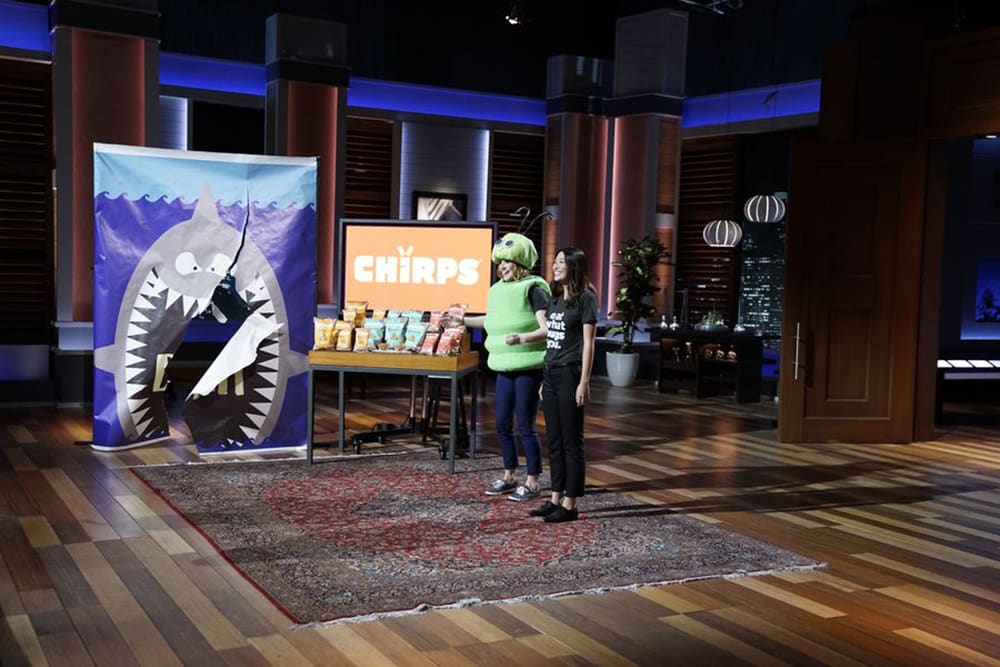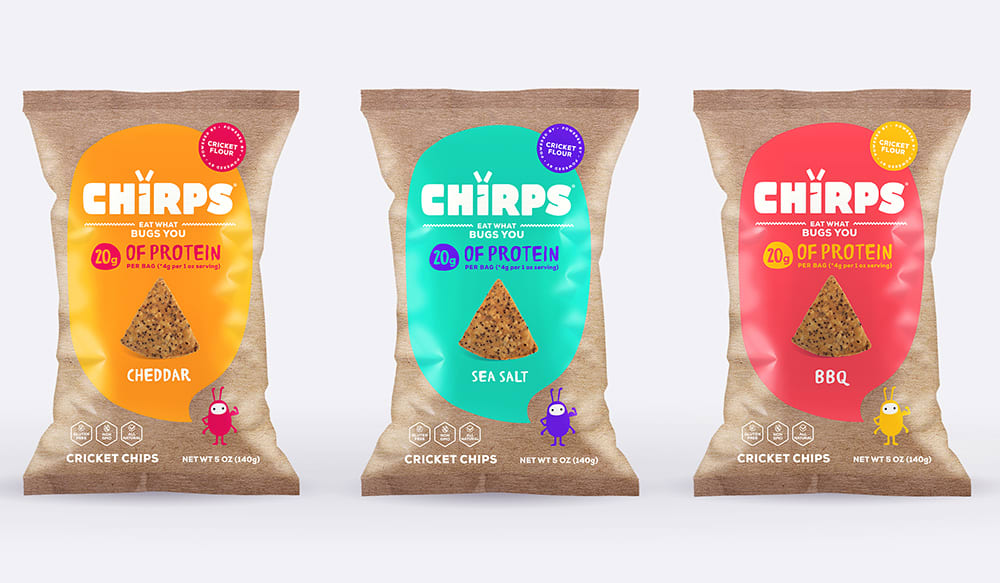
What jumps and is a significant source of protein? In an effort to make the answer—crickets—more appetizing, Meryl Natow (MFA 2015 Design for Social Innovation) has been working for the past several years to develop Chirps, a snack chip made with cricket flour and recently featured on Shark Tank, the entrepreneurial-investing, reality TV show. Conceived of with her business partners Rose Wang and Laura D’Asaro, friends from Harvard undergrad, Chirps was pitched on the January 27 episode as a healthy, sustainable snack option, and marketed as a “gateway bug” for other insect-derived treats. Representing Six Foods (crickets have six legs), the company founded by the three women to produce Chirps, Wang and D’Asaro were seeking $100,000 in funding in exchange for 7% of the business; Mark Cuban, one of the more prominent sharks and owner of the Dallas Mavericks, went in for a 20% stake and eventually the group settled on a 15% share.
Six Foods, for which Natow serves as Creative Director, currently produces three flavors of chips and a cookie mix (including a gluten-free version), with more to come. “We want to bring Chirps to every state!” says Natow. “We hope to convince as many people as we can that eating insects is not gross or dirty, but is delicious and a beautiful thing for our planet.” Below, she delves into their product and its growing success.

Give us the rundown; I’d love hear more about the history of product and the company.
Chirps was born when my co-founder Laura was studying abroad in Tanzania and was faced with the opportunity to eat a caterpillar. She's a vegetarian and wasn't sure where bugs fell on the spectrum, but decided to take the plunge anyway. When she got back to the States, she shared her newfound food love with Rose and I, and we began to research insects. We found out that insects are one of the most sustainable protein sources available. They also have more protein and less fat than beef and are more sustainable than soy protein! We knew we wanted to help spread the eating of insects as an alternative protein source, so we set out to create a product that would serve as most people's first taste of insects: something that was familiar and tasty, while still having the benefits of insects.
How did you guys make your way to Shark Tank? And how did you convince Laura to dress up in that bug costume?
Before Shark Tank, we made all of our money through pitch competitions. One of our early pitches was actually at DSI [MFA Design for Social Innovation]! We were second place winners at the Social Enterprise Bootcamp. So the prospect of pitching on TV for the sharks was hardly daunting (aside from the whole national audience bit). Rose and Laura are such pros at pitching at this point, and they have such a natural flow, that it was the least of our worries. We are so grateful to have had the chance to pitch to the sharks and to share our vision and product with the world on Shark Tank. And as far as convincing Laura to dress up goes, you never have to try hard to get her to put on a costume.
What do the results of the Shark meeting mean for the company?
We are partners with Mark Cuban! We couldn't be more excited to be working with him. We have already seen a huge spike in interest in our products, which is great not only for our business but also for the future of our planet. And it certainly doesn't hurt that Mark's friends are also becoming Chirp-evangelists (Don Cheadle being one of them).
Are there any lessons or experiences taken from your time at SVA that have come in handy during this venture, or do you have advice for current student designers and entrepreneurs?
We had great advisors from DSI along the way. [MFA Design for Social Innovation Chair] Cheryl Heller and [faculty member] Jane Englebardt were guides for me through the early stages of the company. Plus, the DSI curriculum was wildly helpful as we tackled some of our early-stage big-picture questions. And for current students who have entrepreneurial aspirations, just remember that if you believe in a concept and you can see how it will affect change, let the criticism and doubt from others roll off your shoulders.
For more information about Chirps, click here. For more information about MFA Design for Social Innovation, click here.

